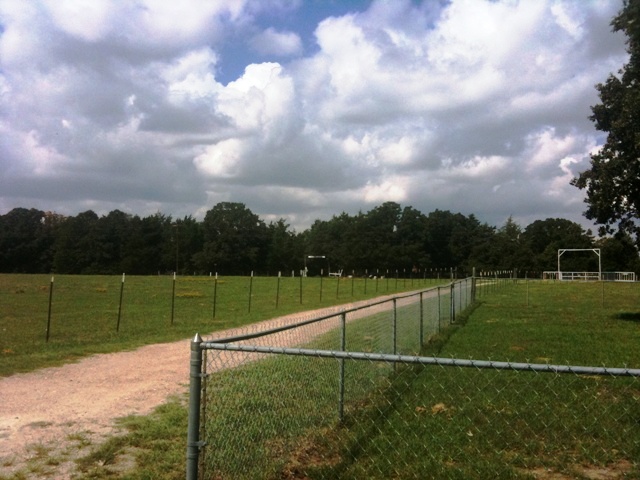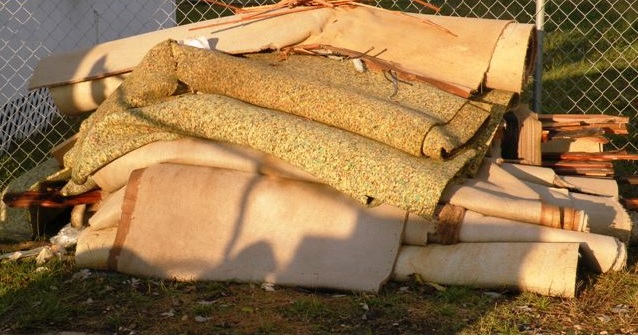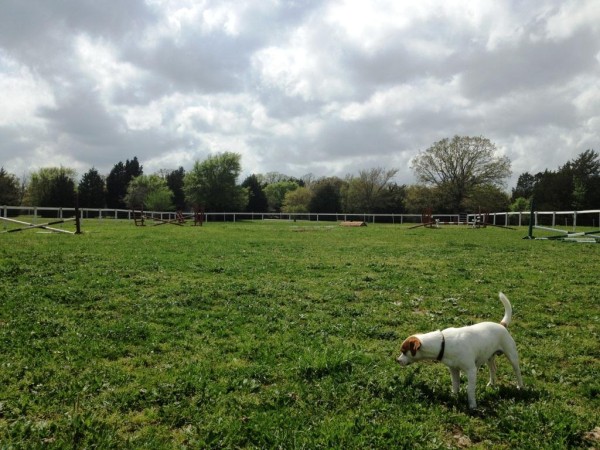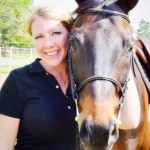The Evolution of Farm Ownership – Part 1
Share News:

October 15, 2010 – All of this fencing had to come down
(Hint: That is not the Ranch of the Week.)
So, you’ve gone and bought a ranch in the country. Congratulations, and welcome to your own personal sweat shop. Cancel your CrossFit membership, folks. Things are about to get real.
The above photo was taken in October of 2010. I had just closed on a hot mess. My new little ranchette in Poetry was eight acres of “what the *!!#! is going on here?” and had been sitting vacant for four years. Let that sink in… property in the country, vacant for four years. Dear lord in heaven, what was I thinking?
I had put myself in a bit of a bind. I gave 30 days notice to the landlord of my darling little Uptown loft… 15 days ago. The same with the owners’ of the boarding barns where my horses were happily being cared for by someone else. So there I was, standing in the rock driveway 45 minutes away from civilization, wondering where the safest place was to put my blow up mattress in a house with carpet that smelled strongly of cat pee.
Despite the daunting task of deciding where to even begin, the property itself was beautiful. Really and truly. It’s on a quiet little dead-end private road, surrounded by trees. When I spied on the neighbor’s property, I could see the corner of her dressage riding arena with nicely tilled sand on the other side of the treeline. It appeared I was among friends.
The first thing to go was the carpet. If you have not ever had the pleasure of removing carpet in the country, let me tell you… It just does not get more disgusting. Consider yourself cured of any future desires to lay new carpet anywhere, ever. This particular gem was of the cheap, brown, and stained variety. Once it was up, we discovered that the subfloor was a bit subpar, and surprise! it needed to be replaced.

The actual pile of crud brown carpet
This was my first real lesson in property ownership. When you start a project, you are given an estimate of the cost. Burn it. It’s irrelevant. As soon as they actually start tearing things up, that’s when it all goes to hell. They really have zero idea what is going on under the surface, and as a rule, it’s not pretty. On a farm, “under the surface” almost always involve one of the Four Pillars of Destruction: Insects, Rodents, Mold, or Poop. Often in combination. Left unattended, nature will take over, allowing nasty things to come right on in and make themselves at home.
So while I had “guys” occupied with getting the carpet out and flooring in, I opted to tackle the fencing outside. The entire perimeter was composed of very poor quality bracing, especially noticeable due to the soft instability of sandy loam soil, t-posts, and five strands of barbed wire. (Sidebar: If I make no other contribution to society, yet persuade even one person to not install barbed wire fencing on their property, I shall consider myself a success.) All of the barbed wire had to come down, and smooth coated high tensile electric wire (a lovely product called White Lightening by Centaur Fence) had to go up. If you’ve never had the pleasure, barbed wire is nasty stuff. The strands are attached to brace posts with tension, so when you cut it loose, it springs back towards you in a manner akin to a shrapnel covered slinky. The object of this super-fun wargame is to remove the strands, one by one, from the t-post using fencing pliers, then roll each strand into a redneck Christmas wreath of rust and tiny knife points. Without losing an eye.
The rolling process is especially nerve-wracking due to the fact that barbed wire behaves only slightly better than a herd of cats, meaning it does what you want it to do roughly 0.05 percent of the time. And the rest of the time it is finding every opportunity to scratch you.

100×200 arena and the Best Dog Ever
Fast forward four years, 20,000 laborious man hours, and 90 percent of my dignity later, and I was in possession of a fairly respectable horse farm. Most of the transformation (and my savings account) involved pipe fencing, an automatic gate, automatic pasture waterers, an arena, run-in sheds, and a tack room. I would say I enjoyed it for roughly one year, one month and 12 days before I got The Itch. No, not a raging case of poison ivy, the Is This Really Enough Acreage? Itch.
There is a saying in the country: “Nothing is more attractive than your neighbor’s property.” The grass is always greener on their side of the fence, and you just want your horses to be eating it. There is a constant, persistent desire for a “bigger place” that just never, ever goes away. Another guaranteed factor after purchasing a farm is What’s One More? Syndrome. Absent of the built-in governor of a monthly board check, you buy a farm and start adding to your collection of misfits, er, future Olympic contenders like you’re auditioning for Hoarders: Buried Alive. Any common sense you formerly possessed, backed up by a monthly bill from your barn owner, pretty much just evaporates the moment you sign next to that little sticker that says “Buyer.”

One Olympic Contender, and one Misfit
Farm ownership is a constant carousel of trial, error, and self-doubt. Will a riding lawn mower be enough to mow my pastures? When do I put grass seed down? What kind of fertilizer do I use? Fertilizer cost how much!??! All of this evolves into “Gee, it sure would be nice to just turn the horses out and not have to worry about throwing hay….” Enter: The Itch.
It starts innocently enough. You’re buying your 97th roundbale over the winter, and you pause to think how nice it would be to have seas of rye grass to put the tiniest dent in your hay bill. You brush it off as something you can’t afford, and you move on. You visit a friend’s farm, with all her lovely broodmares and babies frolicking in a 10 acre grass pasture. You go home and punch “20 acre minimum” into the MLS. Again, determine you can’t afford what you want, move on. But, The Itch persists. Soon, you’re obsessively checking the MLS twice a day, and have searches set up on every single website, just in case one misses something. Everything is too far, the wrong soil, has the wrong improvements, or is fantastically over-priced. Then, one day, a little thumbnail photo catches your eye. This could be The One. The One that satisfies The Itch.
Stay tuned for Part 2: The Farm Buying Process, and How To Move The Old Farm to the New Farm without Sedatives aka: “So, you’ve bought a new farm. Now what?”
 Kathryn Roan is an Ebby Halliday Realtor focusing on farms, ranches, and equestrian properties. Kathryn lives on a 55-acre working ranch in Wills Point, TX with her five horses. Contact Kathryn at Kathryn@TexasEquestrianProperties.com
Kathryn Roan is an Ebby Halliday Realtor focusing on farms, ranches, and equestrian properties. Kathryn lives on a 55-acre working ranch in Wills Point, TX with her five horses. Contact Kathryn at Kathryn@TexasEquestrianProperties.com

